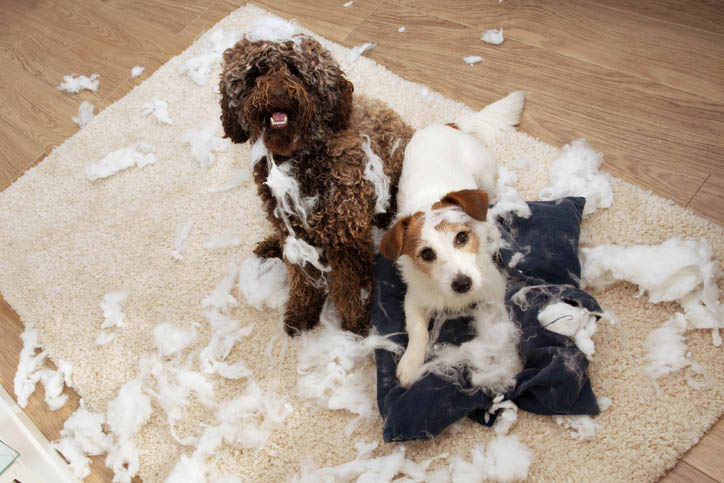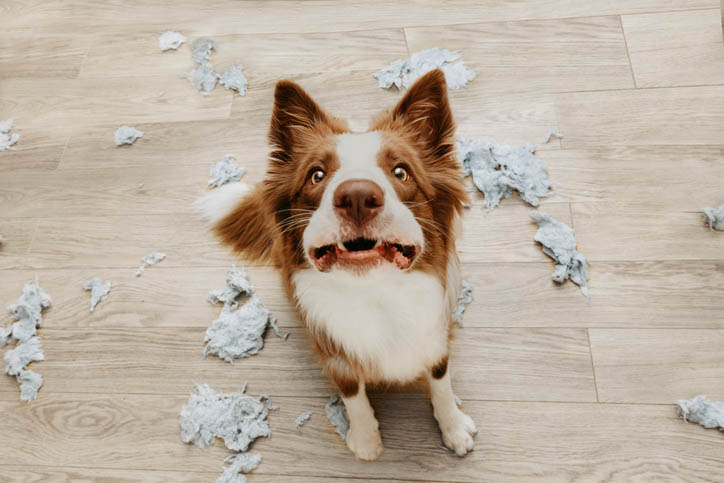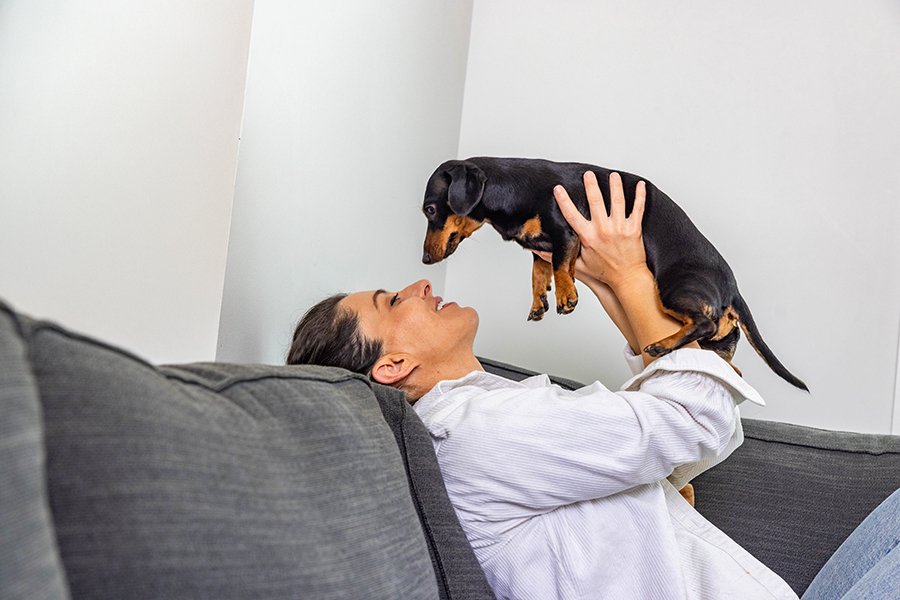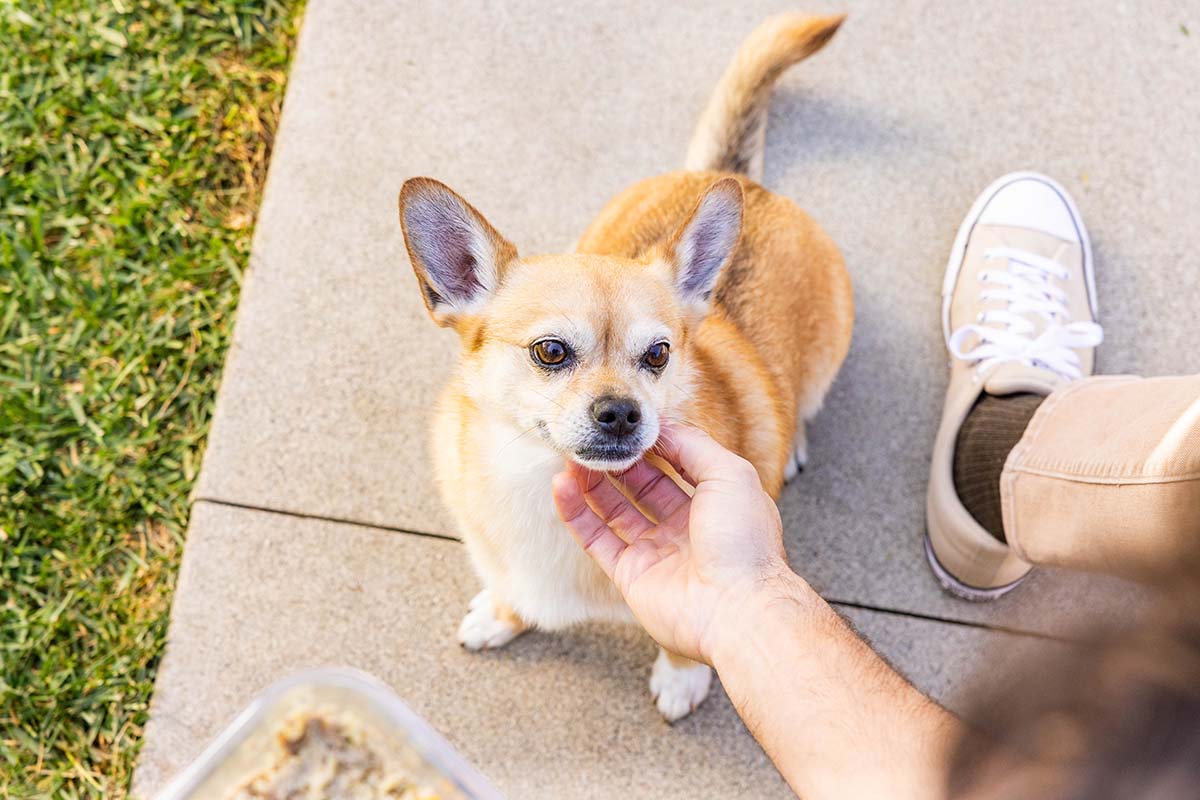Symptoms of Separation Anxiety in Dogs
The signs and symptoms of separation anxiety in dogs and what pet parents can do to alleviate the stress.
While pet parents mean well, many of them unknowingly cause separation anxiety in dogs. Yes, it may already be present in a newly acquired pet’s history, however, it can also arise as an acquired condition. Some pet parents who got a pandemic dog would certainly agree. Let’s take a look at the signs of separation anxiety in dogs as well as how you can prevent it.
Symptoms of Separation Anxiety in Dogs
If you or a family member notices your dog’s behavior change when someone leaves, it’s likely a general sign of separation anxiety.
Specific symptoms of separation anxiety in dogs include:
- Vocalization/excessive barking
- Defecation in the home
- Urination
- Escape attempts
- Destructive behavior
- Rarely spends time alone when you are home
In some cases of separation anxiety, it may be so severe that your dog exhibits the following signs of distress:
- Depression and no interest in food during your departure
- Vomiting, diarrhea, and salivation (drooling)
- Inability to settle or stop moving, circling, or pacing
- Excessive licking or grooming (ie., hotspots occur while you are away)
- Restlessness, shivering, shaking
These anxious behaviors can occur in your home or even at doggy daycare. Signs begin within 30 minutes of your departure, and may not settle for up to an hour, if at all. Sometimes your pet might settle for 15-30 minutes and then cycle with the above signs, settle, and cycle again the entire time you are away.

Solutions for a Dog with Separation Anxiety
There is no one-size-fits-all solution to treating separation anxiety. Your DVM will likely recommend a combination of counterconditioning, training, and medication.
There are several forms of drug therapy including anti-anxiety medications and even natural pheromones. These have few or mixed results when used alone.
The most effective treatment involves a behavior modification program and positive reinforcement training (both the pet owner and the pet), which a vet may recommend doing in conjunction with medication.
Prevention
As with many acquired disorders, prevention is much more preferred and arguably the most effective.
Here are some tips you can do to prevent separation anxiety, or even start addressing it if you catch it early enough.
Most of the time it’s what we DON’T do that helps prevent separation anxiety. In general, the pet parent is inadvertently reinforcing their anxiety.
The key is to be consistent, always try to “catch” them being independent, then reward them for it.
WHAT TO DO AT HOME
- Interact with your dog only on your initiative and only when your dog is relaxed.
- Reward them every time you catch them being independent, having alone time, or being settled and calm for a certain amount of time. Ignore them or walk away when they are being excessively clingy.
- Train them to sit, lie down, or stay as you walk away. Gradually increase distance and time. Treats are great tools for this!
- Practice! Give departure cues (keys jingling, packing your belongings, going to the door, maybe even walking out then coming back in) at times other than true departure.
BEFORE YOU LEAVE
- Take them for a walk. This should go without saying. No matter the duration or periods of time you will be away, take your dog out to go potty beforehand.
- NO DRAMA. Show complete indifference for 20 minutes prior to going out. When you leave, walk out without saying goodbye. Always make leaving “no big deal.”
- Desensitization and mental stimulation. Leave behind a peanut butter-filled Kong or puzzle toy so they have mental stimulation. If you give it to your dog right before you go, they might be too invested in getting to that treat to notice you leaving. Keep consistent. Giving them a high-value treat every time you get ready to go might even get them to look forward to you leaving.
WHEN YOU RETURN HOME
- NO DRAMA. Ignore excitable greetings. Do not interact until your dog feels calm and relaxed.
- Do not reprimand or punish for behavior problems. If you are able to ignore the destruction, do so until a later time when you can quietly clean up.
Other tips for separation anxiety
If you have already done crate training or can pick up the signs early and are consistent with the tips above, it is unlikely that your pet will develop severe separation anxiety. However, every dog is different, and some highly anxious dogs may need extra help.
You can always consider a natural calming supplement to help support the effectiveness of the above techniques.
If none of these are working, or if you have a difficult case, then please visit your veterinarian or consider a consultation with a board-certified veterinary behaviorist. A certified professional dog trainer (CPDT) can also help if you are struggling with the training process.
Pets provide us with so much love, loyalty, and companionship. Sometimes, how we relate to them dictates how they perceive the world around them. We know you love them back, so please realize that even though you are “ignoring” them when you come home and consistently following the above tips, what you are actually doing is calming them in the long run. You are ultimately helping them so that you can have more life, more years, and more love.
This content is for informational use only and does not replace professional nutrition and/or medical advice, diagnosis, or treatment. It is not a substitute for and should not be relied upon for specific nutrition and/or medical recommendations. Please talk with your veterinarian about any questions or concerns.








